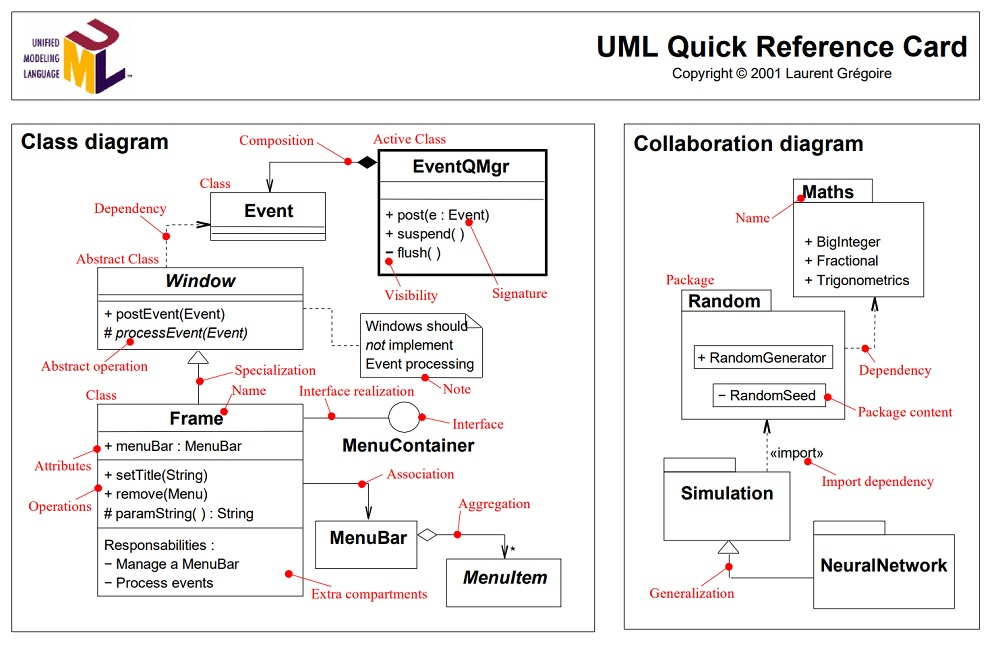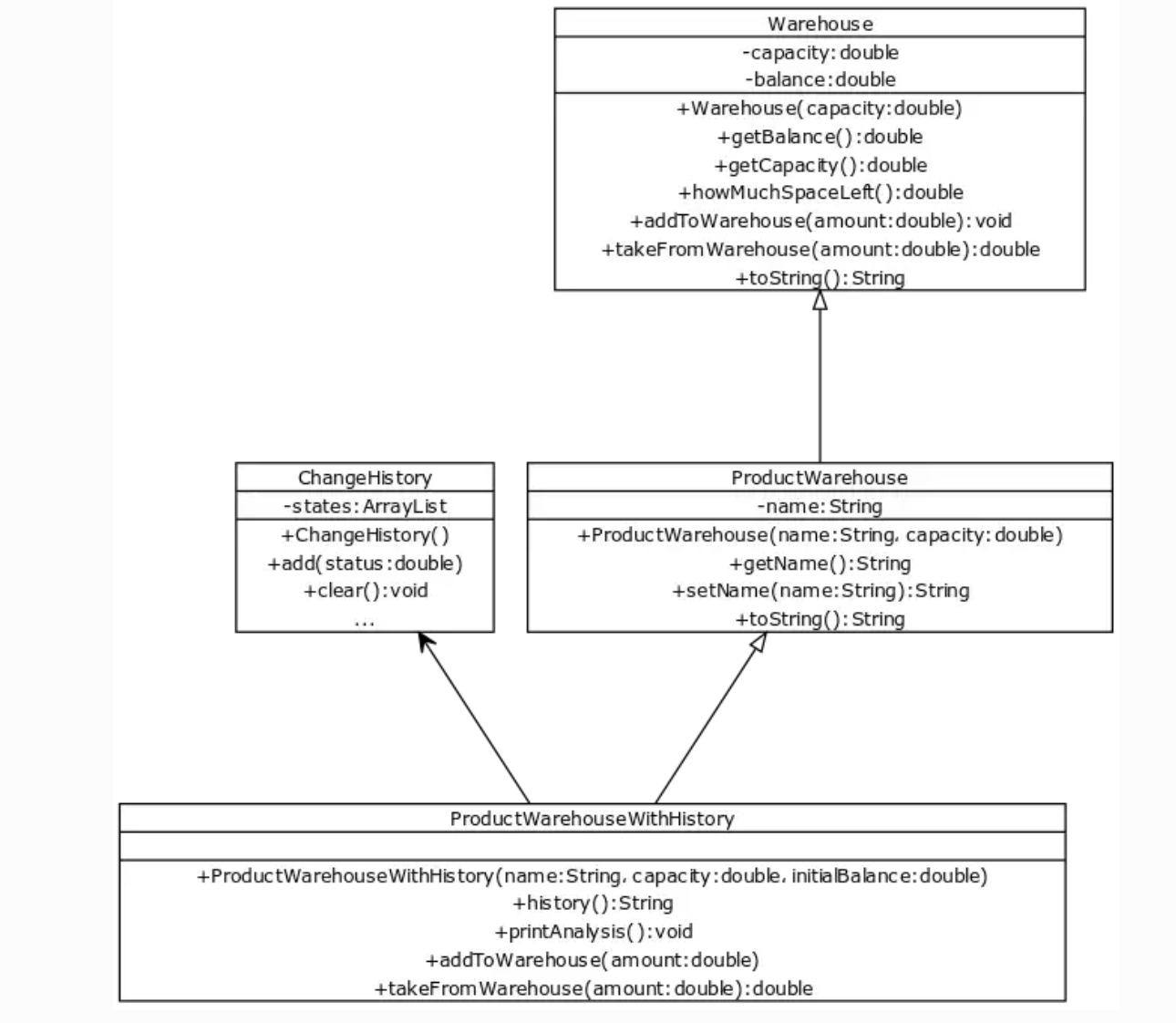Created: 2023-08-28 10:04
Status: #concept
Subject: Programming
Tags: Java Java Class UML
Class Diagram
It is a programmatically generated visual notation to represent Java Class structures.
- it describes
classattributes, constructors, and method contracts, and the connections between other classes, but not the underlying implementation.
Syntax

- a
+means thepublickeyword is used, otherwise-denotesprivate. - arrows
->represent semantic relationships, for exampleBook -> Personmeans aBookclass keeps a reference of thePersonwho wrote the book, butPersondoesn't. - an arrow with an asterisk
->*indicates a One-to-many relationship, so the origin class has an ArrayList of the class it points to. - if there is no arrow
-, then both classes keep track of a reference of each other.
Describing Inheritance
If a subclass
extends a superclass, we represent that relationship with a hollow triangle arrowhead child -|> parent.
- if we inherit a Java Abstract Class, we add the
<<abstract>>italic label on top of the class name and make all itsabstractmethods italic. - similarly, when implementing Java Interfaces, we use the same notation but with
<<interface>>on top of the class name and a dashed arrow- -|>.

Function Signature Syntax
Some examples of common functions in a
Person class:
+Person(name: String)- the Java Class constructor.-name: Stringaprivateattribute.+sayHi(): void- apublicMethod that takes in noting & returns nothing.+getName(): String- a getter method that returns thethis.nameinstance variable.+setName(String)- a setter method to changethis.nameof the instance.